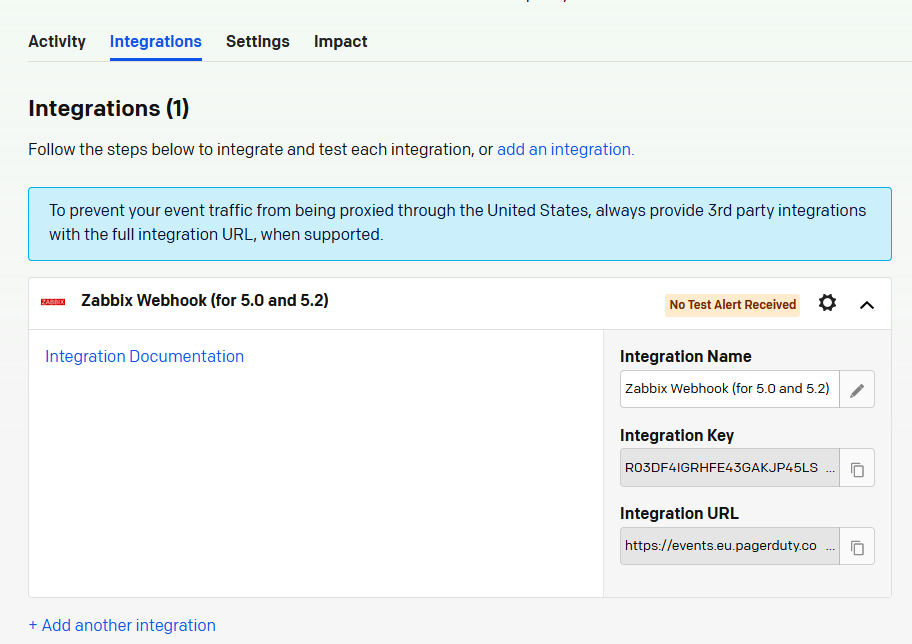This guide describes how to integrate your Zabbix 4.4 installation with PagerDuty using the Zabbix webhook feature. This guide will provide instructions on setting up a media type, a user, and an action in Zabbix.
Why PagerDuty
- You can send notifications through the various integrated collaboration tools that PagerDuty supports, including SMS, push notifications, phone calls, and email.
- Monitoring teams can reach out to the subject matter expert, who can help resolve customer critical infra issues.
- PagerDuty provides flexibility by having rotating on-call schedules based on business hours shift, overnight on-call shift, and weekend shift so reaching out to the appropriate engineer can be achieved seamlessly.
In PagerDuty
1. From the Configuration menu, select Services.
2. On your Services page:
- If you are creating a new service for your integration, click +New Service.

- If you are adding your integration to an existing service, click the name of the service you want to add the integration to. Then click the Integrations tab and click the +New Integration button.

3. Select Use our API directly and Events API v2 from the Integration Type menu and enter an Integration Name. If you are creating a new service for your integration, in General Settings, enter a Name for your new service.
4. Click the Add Service or Add Integration button to save your new integration. You will be redirected to the Integrations page for your service.

5. Copy the Integration Key for your new integration:
In Zabbix
The configuration consists of a media type in Zabbix, which will invoke webhook to send alerts to PagerDuty through the PagerDuty Event API v2. To utilize the media type, we will create a Zabbix user to represent PagerDuty. We will then create an alert action to notify the user via this media type whenever there is a problem detected.
Create Global Macro
1. Go to the Administration tab.
2. Under Administration, go to the General page and choose the Macros from drop-down list.
3. Add the macro {$ZABBIX.URL} with Zabbix frontend URL.

4. Click the Update button to save the global macros.
Create the PagerDuty media type
1. Go to the Administration tab.
2. Under Administration, go to the Media types page and click the Import button.
3. Select Import file media_pagerduty.yaml and click the Import button at the bottom to import the PagerDuty media type.
4. Change the value of the variable token

Create the PagerDuty user for alerting
1. Go to the Administration tab.
2. Under Administration, go to the Users page and click the Create user button.
3. Fill in the details of this new user, and call it “PagerDuty User”. The default settings for PagerDuty User should suffice as this user will not be logging into Zabbix.
4. Click the Select button next to Groups.
- Please note, that in order to notify of problems with the host this user must have at least read permissions for the such host.
5. Click on the Media tab and, inside of the Media box, click the Add button.

6. In the new window that appears, configure the media for the user as follows:

- For the Type, select PagerDuty (the new media type that was created).
- For Send to: enter any text, as this value is not used, but is required.
- Make sure the Enabled box is checked.
- Click the Add button when done.
7. Click the Add button at the bottom of the user page to save the user.
8. Use the PagerDuty User in any Actions of your choice.
For more information, use the Zabbix and PagerDuty documentation.





